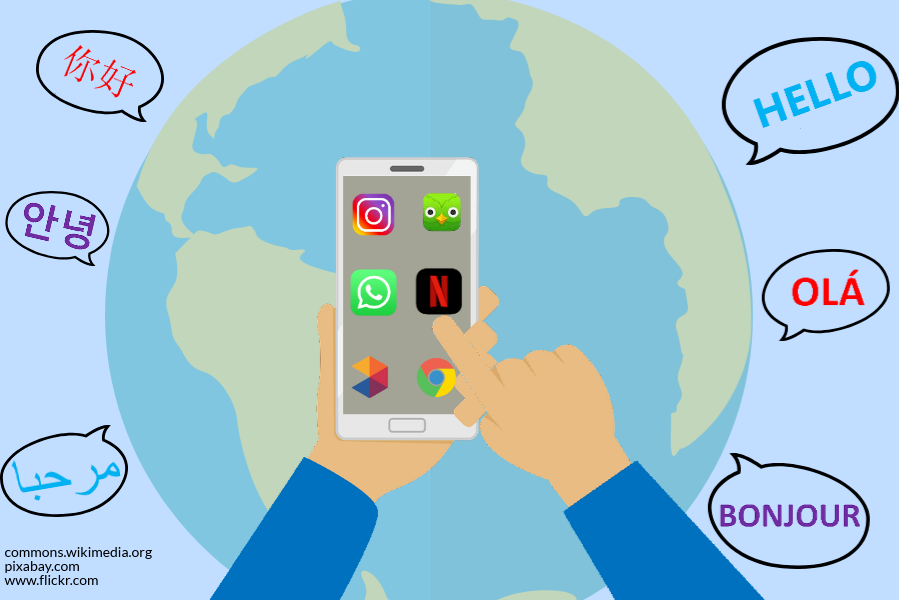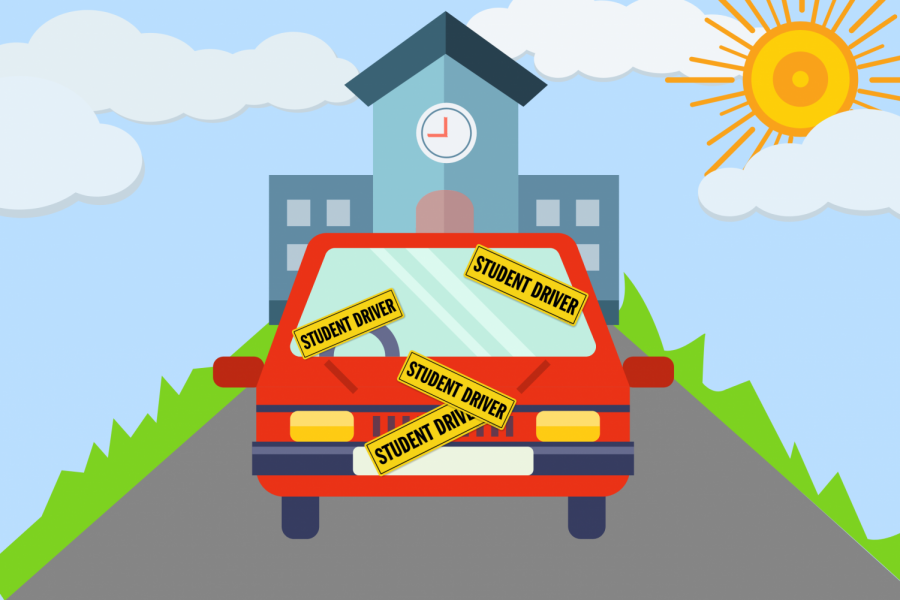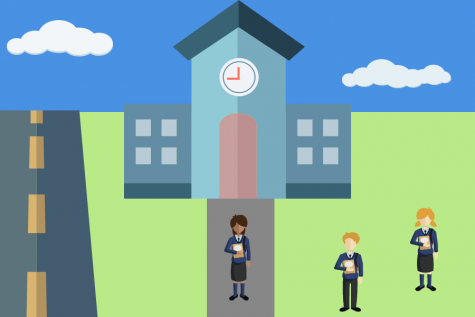Language fluency—it’s more attainable than you might think
April 16, 2019
If you’ve spent months filling out worksheets in a language class, only to attempt to speak in said language and realize how inarticulate you sound, you’re not alone. In fact, a random survey of 35 upperclassmen found that nearly 95 percent feel that Whitman language classes prepare them only somewhat or not at all to converse in their target languages.
But students shouldn’t be discouraged if they aren’t benefiting much from language classes in school; there are plenty of ways to improve fluency at home. If you’re motivated to learn a language, you can make significant progress without teacher assistance. Plus, you’ll have the freedom to choose any language you’d like to learn—not just those offered at school.
I’ve taken 3 years of Spanish at Whitman, and I’m pretty proficient in the language, but primarily because my family speaks it at home. I’ve always wanted to learn another language, so after viewing advertisements for various language learning platforms, I wanted to give them a try.
I attempted to learn as much French as I could over a two-week span, starting from complete scratch. As a busy student with homework and activities to balance along with this task, I didn’t begin with expectations of becoming confidently conversational. No matter how you approach your learning, it’s imperative to set realistic goals because trying to cram too quickly will only set you up for failure.
The various methods I used may each be more suited for some people than others. Hopefully, this compilation of each method’s pros and cons helps you create a perfect plan for reaching foreign language proficiency.
1. Use the internet!
As obvious as this might seem, many people don’t take advantage of the internet’s vast array of language-learning resources. Some assume that the best programs will require costly subscriptions. This isn’t the case! There are loads of websites with free language learning programs, including videos, email reminders containing practice activities, skype sessions with native speakers or vocabulary games. The diversity of online language programs makes them suitable for all types of learners.
I enrolled in a free two-week trial for FluentU.com, a site that allows for great flexibility in content, even for beginners. Despite my intimidation at starting from scratch, I found FluentU’s video lessons very approachable. Not only do the interactive captions allow you to hover over words and easily replay segments of audio, but the videos range from cartoons to speeches and present a variety of entertaining content. The site was particularly useful in exposing me to the nuances of different speakers and dialects, including slang.
Here’s a list of 52 free language programs currently available online: https://www.fluentu.com/blog/free-language-learning-websites/
2. Ditch Instagram and download some new apps!
We all say we spend way too much time on social media, yet we continue to drift to it when bored. One of the easiest ways to improve language fluency is to use that same time more productively through language learning apps. Apps provide a great diversity of activities, from exercises that involve listening to and repeating phrases and basic vocabulary matching.
During my experiment, I chose to download Duolingo and Babbel, but there are plenty of other applications available. While I only had access to Babbel through a free trial—it requires paid subscription for long-term use—I preferred it over Duolingo. Babbel allowed me to truly customize my language learning, which made it worth the price. For instance, you can choose freely to learn vocabulary centered around going on vacation, a sport you enjoy or the most commonly used words; on the other hand, most free apps require you to constantly unlock new content.
3. Don’t forget about podcasts
Music is a great relaxation outlet, but you can also swap out a playlist for a language podcast every now and then. Podcasts are easy to engage with during your spare time, and, unlike apps or computer programs, are also accessible while driving or doing other activities. Some podcasts for language learners, like “News in Slow French,” come in the form of recorded plays or talk shows. These can actually be more effective than direct instruction; context clues and the natural flow of conversation train the ear to recognize the syntax in the language as well as pick out known vocabulary. Popular podcasts include “English as a Second Language,” “Learn German Vocabulary” and “Italian Podcast—Improve your Italian”; but there are many more to explore.
Podcasts are available for free on iPhones or on Spotify for other devices.
4. TV can be educational
Sometimes even online curriculums are too tiresome for a busy student. In that case, watching Netflix, or any other form of TV, in your target language is a relaxing way to supplement your learning. It’s particularly effective for visual learners who prefer to use context and plotlines to decipher what’s being said. Most importantly, it’s super engaging. For learners who easily lose focus with other methods, TV is definitely the way to go. It’s also a great way to ease into a language—you can start by watching with subtitles in English (or whatever language you’re most comfortable with), then progress to subtitles in the target language and eventually watch without subtitles.
For my endeavors with French, I began the show “The Returned,” which has French audio with automatic English subtitles. Most languages have a wide variety of shows on Netflix. Some popular choices include “La Casa De Papel” (Spanish), “OCTB” (Chinese), and “The 3%” (Portuguese).
With all these methods, you should be well equipped to start sharpening your language skills. If you’re overwhelmed by all of the options, it’s always a safe bet to pick one and focus your learning on that platform and then decide where to go from there.
Before you begin, it’s important to make sure you’re in the right mindset, too. When I began, I visualized myself devoting large amounts of time to my daily learning. But this turned out to be unrealistic, and I ended up incorporating my learning more fluidly into my schedule instead of carving out huge chunks of time. The key to consistency is to progress gradually because suddenly putting aside too much time to this new, daunting task might leave you burned out quickly.
It’s also critical to be patient with yourself. I began my experiment knowing no French at all, but I still became frustrated when I couldn’t comprehend the subject of basic conversations in a French show. Taking a step back and recognizing that concrete progress may not come in the short term is critical to staying motivated.
Although I can’t say I’m fluent, or even conversational, expanding my vocabulary each day has been extremely gratifying. Of course, it will take time to truly master grammar and begin conjugating verbs in more complex tenses, but being able to understand simple sentences already allows me to better grasp the syntax of the French language.
My final piece of advice is the most important: enjoy the process! Today’s advanced technology provides us with so many opportunities for engaging learning; we shouldn’t take it for granted.










